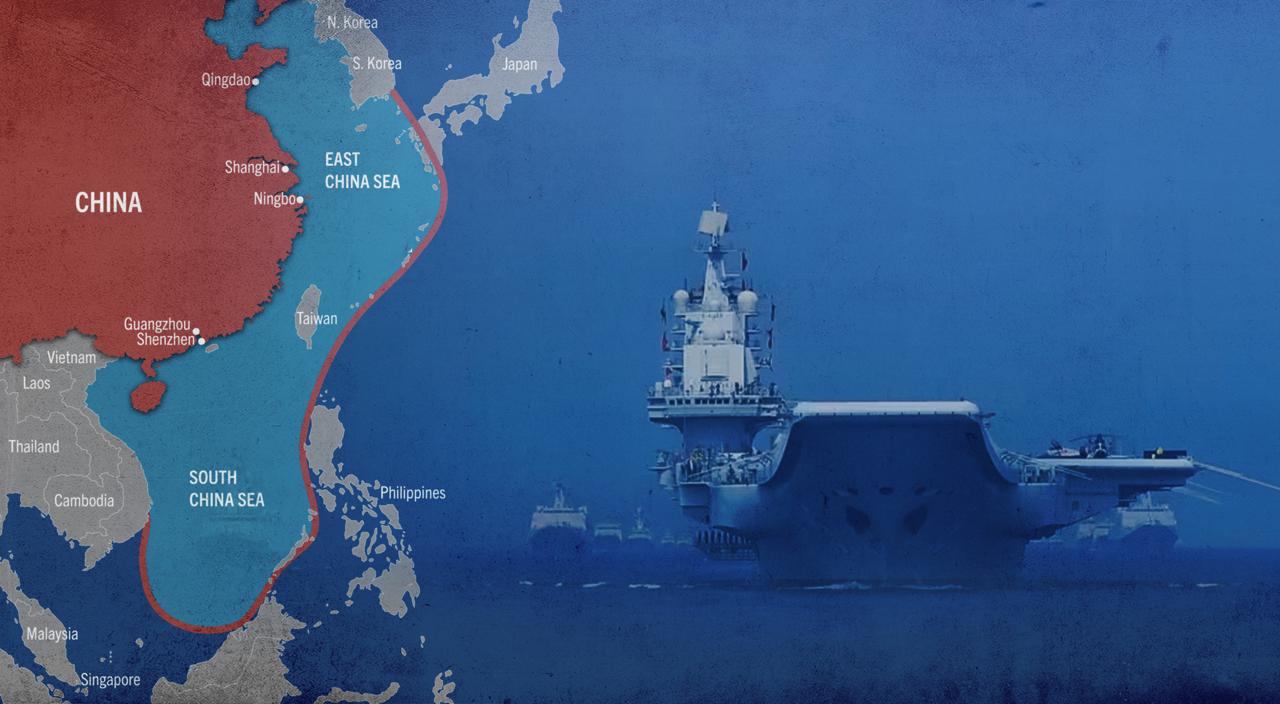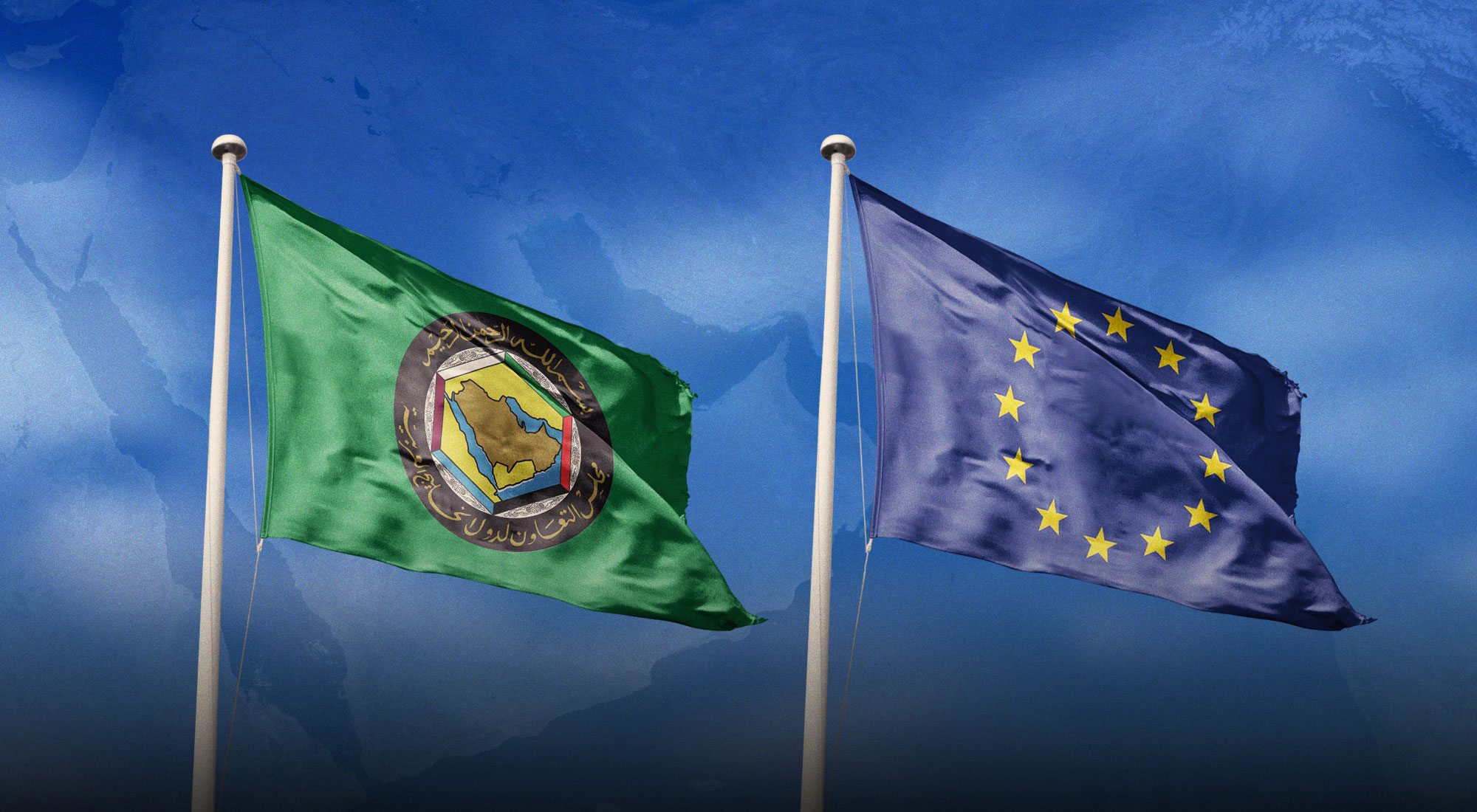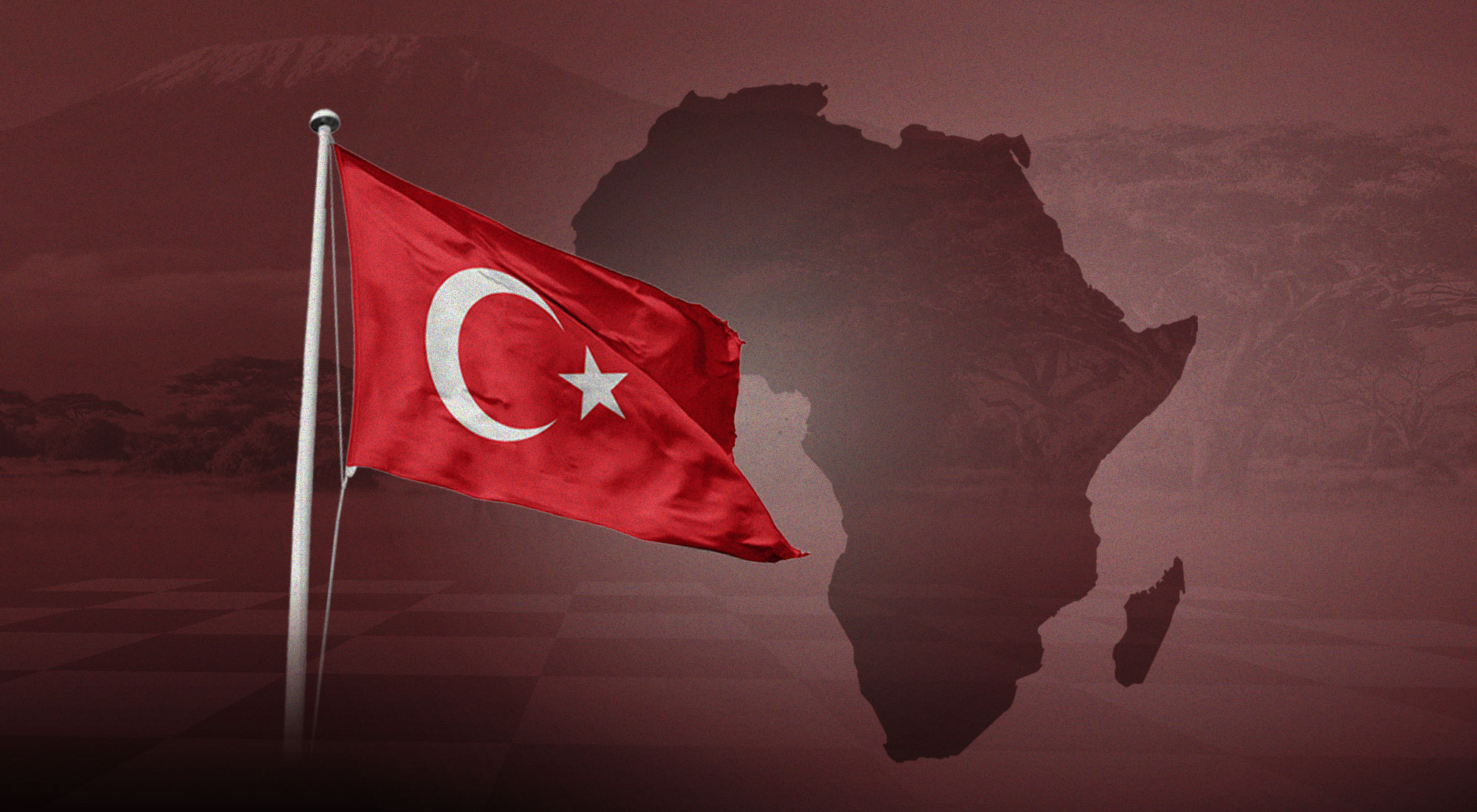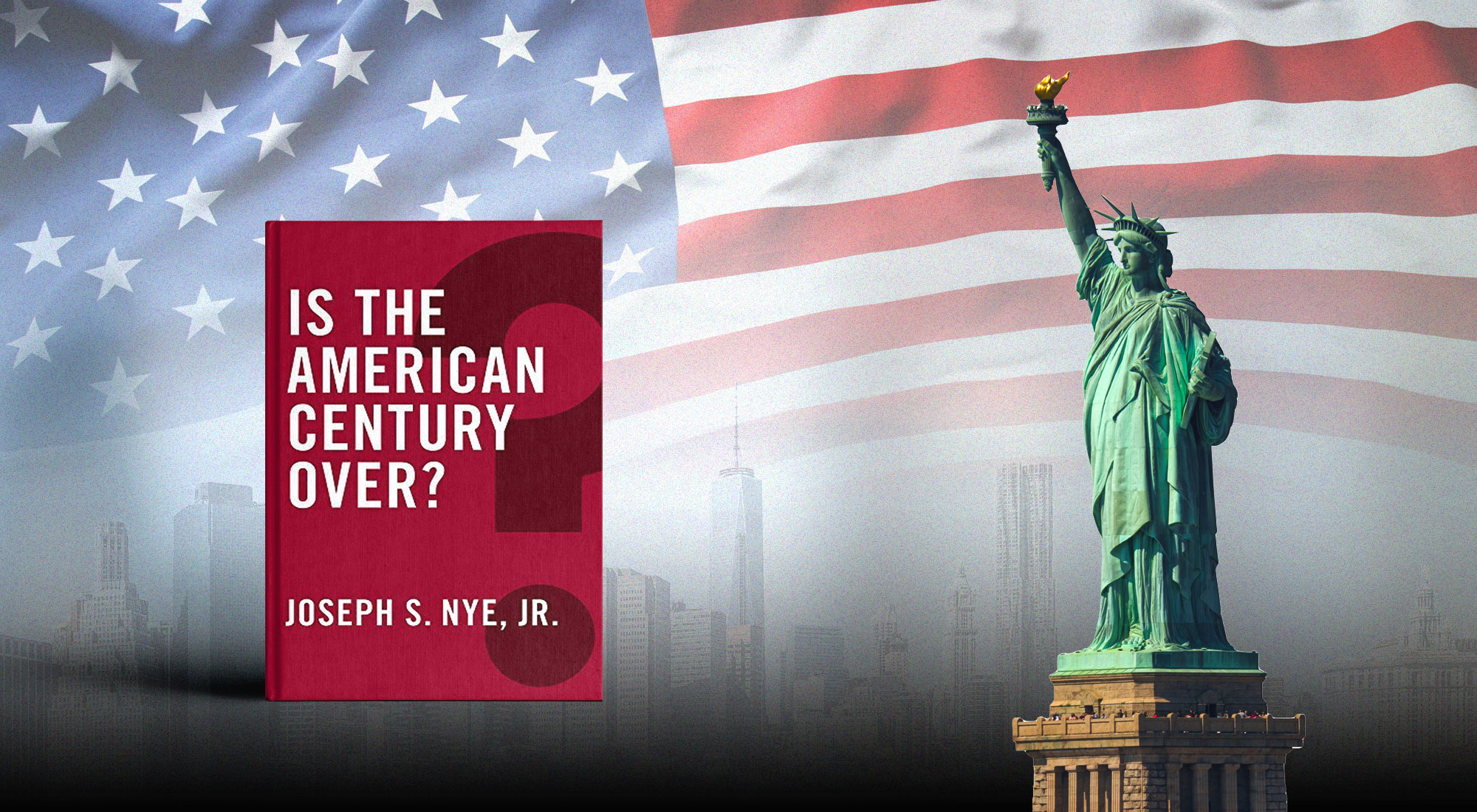Context and background
The Southeast China Sea, the gateway for the Chinese shipping empire and some of the Southeastern Tiger states have been witnessing a long territorial dispute since the last century between China and the neighboring states. The origins of this ongoing conflict, which has been aggravated over the past few months, began when Chinese shipping vessels used to pass through this region, leaving behind maps with borders drawn on them that showed the Chinese Sea boundaries to be farther away than the surrounding nations had agreed upon. They were issued by China in 1947 and were also referred to as the “9-dash line.”[1]
However, things are now much more complicated since the discovery of oil and natural gas in this area. China’s National Offshore Oil Corporation (CNOOC) announced in March 2024 the discovery of 100-million-ton oil wells in the South China Sea.[2] This discovery, along with other reasons, has added many layers to this conflict. States like Vietnam and the Philippines have renewed their claims and demands for their offshore borders. These demands have led to collisions with Chinese forces and have a long history that dates back to 1974. During that year, there was naval collision warfare between Vietnam and China on the Islands of Parcell. These were Vietnamese islands that China had a historical claim to and managed to successfully gain with hard power, which led to casualties on both sides.[3] In 1988, China and Vietnam engaged in another collision over the Spartly Islands, which also ended with Beijing claiming them. In 2012, tensions escalated again due to China building military bases on these islands, with the Philippines and Vietnam protesting against this action.[4] In 2016, the Permanent Court of Arbitration in The Hague passed a verdict in favor of the Philippines and denied Chinese claims of total regional control of the South China Sea. China, however, did not abide by the ruling and continued to increase its military presence in these waters and around those islands.[5] These are the historical developments that led us to the current situation of tension in that area. This timeline of events serves as the basis for understanding as we delve deeper into the situation we have today and why it is important.

The East China, South China, and Yellow seas, Source: Encyclopedia Britannica
Key players in the conflict
First and foremost, the states having direct access to the South China Sea are the major actors in these tense waterfronts. China comes first, of course, because these waters are literally referred to as the South “China” Sea by everyone. There is also Vietnam, which has attempted to maintain its claim to islands it has lost as a result of direct force-to-force confrontations with China in these waters. Next, we will discuss the Philippines, which is experiencing growing tension, in the section of this insight devoted to current events. Malaysia and Brunei are also affected directly by this tension and by the Chinese claims over these waters and islands. Furthermore, Japan is also an important actor that seeks to preserve international trade lines in the South China Sea. Japan has its Official Security Assistance Program (OSA), which aims to aid “like-minded” states and has supplied Vietnam and the Philippines with patrol ships and equipment in the previous months to help them assert more security and control over their maritime claimed borders.[6]
The dispute over these troubled waters involves the United States as a player and a stakeholder, as demonstrated by their repeated statements during political visits, such as Secretary of Defense Lloyd J. Austin’s trip to the Philippines.[7] The U.S. Secretary of Defense also stated that Washington is committed to the 1951 treaty of mutual defense with the Philippines and that their commitment to it is “ironclad”, and both Washington and Manila have agreed on increasing military presence of U.S. forces on four Filipino military bases.[8] Malaysia, however, stands on the side of China on this matter only. As Malaysia continues to reject China’s borders and claims, the country’s prime minister said in a meeting in China in April 2024 that Malaysia also rejects “external powers” meddling in the dispute as a response to joint exercises between the U.S. and the Philippines.[9] This is while China urges the U.S. not to interfere with the dispute and leave it to the states involved.
Current events and analysis
Following a discussion of the key players in this escalated maritime dispute, it is clear that the situation does not fit into a simple “one against all” scenario, at least not entirely and not in the past. Both Vietnam and the Philippines assert their claims and maritime boundaries, which are interconnected. Not to mention China’s desire to isolate every state and assert that this would make it easier for it to influence events to its advantage. It is simpler to deal with one state at a time rather than face a largely unified front. However, part of the “Balance of Power” theory suggests that smaller states may feel compelled to work together to create the equilibrium of power that the theory name suggests.[10] Both the Philippines and Vietnam agreed in January 2024 to cooperate on maritime security in the South China Sea. These deals were signed in Hanoi by Philippines President Ferdinand Marcos Jr. and indicate that both states have decided that the two countries’ coastguards will work together to patrol, manage, and safeguard the disputed waters jointly.[11]
However, there have been some collisions in the past two months involving Chinese patrol boats and Filipino cargo vessels. A video of the incident was recently made public in May 2024. It has been reported that the Chinese Coast Guard’s water cannons caused damage to the Filipino cargo vessel.[12] These actions did not deter China from further increasing its military presence in these islands and waters. As said earlier, they built bases on the Parcel Islands and the Spratly Islands that they seized from Vietnam. Images from U.S. data company “Planet Labs” show the extent of infrastructure built on these islands, which surprisingly includes a cement factory to speed up the building of all the needed infrastructure and add man-made islands as well. Since August 2023 and early 2024, China has continued to demonstrate its military and naval power by holding exercises near Taiwan.[13] More military face-offs and skirmishes are anticipated, but that is a risk China is willing to take apparently. The Philippines, on the other hand, is also preparing by reminding China that they have safety and protection treaties with both America and Australia. These treaties allow troops from both countries to enter and aid the Philippines. The Philippines is also close to signing similar treaties with France and Japan, which would intensify the conflict and add more players to the field.[14] As a show of strength and a demonstration of capabilities, in April 2024, the Philippines and the U.S. held the largest annual military exercise, where they staged the sinking of a warship and the retaking of an island to send a clear message of challenge and provocation to their Chinese counterpart.[15] China has no intention of reducing the tension in the region at this time. The South China Morning Post reported on 2 June that China plans to increase its military naval exercises around Taiwan. Lieutenant General Jing Jianfeng, vice chief of the Joint Staff Department of the Central Military Commission, has promised to destroy any foreign power that enters the conflict and accused the U.S. of seeking to establish a “NATO-like” alliance in Southeastern Asia, which will cause more tension and raise vigilance in these disputed waters.[16]
Strategic importance
The United Nations Conference of Trade and Development (UNCTAD) estimated that when measured by volume, shipping by sea accounts for 80% of global trade. Roughly a third of that passes through the South China Sea annually, and it is valued at $5 trillion annually.[17] This makes the South China Sea one of the most critical points for the world’s economy. Among the Asian nations embroiled in the dispute, China is the region’s largest single user for shipping, but the rest of the world also uses this area heavily for trade between China, Japan, and South Korea as well. This includes the U.S. and Germany.
Now in order to assess the strategic importance of the South China Sea and the so-called “9-dash line” for every stakeholder, it is necessary to consider the following factors:
- To Japan, this area holds great significance as 80% of its energy passes through it along with many of its trade imports.[18] This indicates that the South China Sea is not only significant, but it is crucial for Japan’s survival. When it comes to Japan’s stance on the matter, it shares and supports the U.S. stance on the matter, which is to secure the freedom of navigating maritime tradelines and to keep them safe and secure.
- The U.S., as we discussed previously, seeks to maintain the freedom and security of these waterways because they are vital to global trade. In addition, the U.S. has security treaties signed and allies with parties to the conflict in the region; failing to do so could have dire economic consequences for them and their allies. It is also politically rational to say that the U.S. doesn’t want China to enlarge its influence and reach, and that this conflict is an opportunity for the U.S. to counteract China’s expansion and dominance.[19] The U.S. has expressed that it is willing to take military action if the need calls for it, either to aid its allies in the area or to safeguard Taiwan from being taken by Chinese forces.
- Malaysia, however, has a unique position. The maritime area is important as it holds many unexplored gas and oil wells. The Kasawari gas field is a big energy source for Malaysia, and it contributes to at least 20% of the Malaysian GDP.[20] The unique position arises between Malaysia’s economic interests in the area, navigating its relationship with the U.S. while refusing foreign interference, and maintaining a positive relationship with China, which is Malaysia’s biggest trade partner.[21] This puts Malaysia in a situation where it must balance its interests with those of not one, but two superpowers.
- As for the Association of Southeast Asian Nations (ASEAN), it stresses the need for diplomacy and seeking a peaceful resolution of this conflict. ASEAN’s stance in the conflict remains impartial to the dispute and refuses to take sides while working with China to make a Code of Conduct (COC) for maritime security. That could be inferred and traced to the fact that even though some ASEAN members are in confrontational mode with the Chinese claims, like Vietnam and the Philippines, China remains ASEAN’s largest trading partner, with ASEAN reaching $722 billion in trade with China in 2022.[22] This forces ASEAN to consider the stance they take as a group.
- Vietnam and the Philippines have made it clear that they oppose Chinese claims to the area and work together to maintain maritime security to safeguard it from Chinese patrols and demands. Both states have signed bilateral agreements in that regard. The Philippines welcomes American meddling as they share a joint defense agreement that was mentioned in this report.
- China is interested in the hundred million tons of unexplored gas and oil fields in these waters and believes that this area is rightfully theirs, as was stated in the introduction. They vehemently, however, reject the intervention of any state outside of the conflict with fingers pointing toward the U.S. behind the statement. As it has stated in most international events, the Chinese government has made it clear that it is prepared for more skirmishes, and is ready to take any necessary military action.
Conclusion and future insight
The South China Sea remains a contentious area, with many states having competing claims to it. The area is unlikely to become calmer anytime soon, given the recent events and the growing tension. On the contrary, as the Chinese influence grows, we are likely to witness more tension building. Whether it is acknowledged or not, the Southeastern Region has the greatest Chinese influence. That is why ASEAN stays neutral when Chinese claims affect its members. Of course, it is the Chinese economic influence, but its military might should also not be overlooked.
The famous saying “Only a fool learns from his own mistake, the wise man learns from the mistakes of others,” attributed to Otto von Bismarck, partly indicates the current situation. China has observed how the U.S. and the Western world handled issues like Russia vs. Ukraine. When the time comes for China to act, it will have learned from events such as this. One might argue as well that one of the biggest beneficiaries of the situation in Russia and Ukraine is China.[23] As the Western cluster and the U.S. focus on supporting Ukraine, Beijing has not slowed down its reaching control over the South China Sea and it has learned that any attack to regain Taiwan must be swift and decisive to avoid an elongated situation.[24] Not to mention how closely linked the economies of China and the U.S. are. This means that any conflict or immediate military confrontation between them would have severe repercussions for each party and have a knock-on effect on the global economy.
The world must closely monitor the situation in these turbulent waters due to the conflicting parties involved and the area’s significant role in global trade, as it serves as a major thoroughfare for maritime trade, with one-third of the world’s trade passing through it. Therefore, “navigating these troubled waters” is a crucial economic and political endeavor.
References
[1] Steve Mollman, “The line on a 70-year-old map that threatens to set off a war in East Asia,” Quartz, July 21, 2022, https://qz.com/705223/where-exactly-did-chinas-nine-dash-line-in-the-south-china-sea-come-from.
[2] “China’s CNOOC makes 100 million ton oilfield discovery in South China Sea,” Reuters, March 8, 2024, accessed June 2024, https://www.reuters.com/business/energy/chinas-cnooc-makes-100-million-ton-oilfield-discovery-south-china-sea-2024-03-08/
[3] Carl O. Shuster, “‘Speed forward, fight close and hit hard’ — How China won the Battle of the Paracel Islands,” Navy Times, August 19, 2022, https://www.navytimes.com/news/your-navy/2019/03/14/speed-forward-fight-close-and-hit-hard-how-china-won-the-battle-of-the-paracel-islands/.
[4] BBC News, “Protest in Philippines over South China Sea stand-off,” May 11, 2012, https://www.bbc.com/news/world-asia-18030805.
[5] Caitlin Campbell, “South China Sea Arbitration Ruling: What Happened and What’s Next?,” U.S.- CHINA ECONOMIC and SECURITY REVIEW COMMISSION, July 12, 2016, accessed June 2024, https://www.uscc.gov/research/south-china-sea-arbitration-ruling-what-happened-and-whats-next
[6] “Japan, Philippines in final stages of talks on security aid – Japan govt spokesperson,” Reuters, November 1, 2023, https://www.reuters.com/world/asia-pacific/japan-philippines-final-stages-talks-security-aid-japan-govt-spokesperson-2023-11-01/. ; Jumpei Ishimaru, “Japan’s shifting foreign-assistance schemes,” The International Institute for Strategic Studies, April 22, 2024, accessed June 2024, https://www.iiss.org/en/online-analysis/online-analysis/2024/04/japans-shifting-foreign-assistance-schemes/#:~:text=OSA%20is%20designed%20to%20strengthen,forces%20and%20’relevant%20organisations.
[7] Jim Garamone, “Austin Visit to Philippine Base Highlights Benefits of U.S-Philippine,” U.S. Department of Defense, February 1, 2023, accessed June 2024, https://www.defense.gov/News/News-Stories/Article/Article/3284587/austin-visit-to-philippine-base-highlights-benefits-of-us-philippine-alliance/.
[8] Phil Stewart, “Damage, Injury to Philippines in South China Sea Is ‘Irresponsible Behaviour’, Says US Defense Secretary,” Reuters, May 3, 2024. https://www.reuters.com/world/asia-pacific/damage-injury-philippines-south-china-sea-is-irresponsible-behaviour-says-us-2024-05-03/.
[9] Liu Zhen and Liu Zhen, “South China Sea: Malaysia opposes ‘external forces’ meddling in disputed waters, foreign minister says in swipe at US-Philippines military exercises,” South China Morning Post, April 25, 2024, https://www.scmp.com/news/china/diplomacy/article/3260385/south-china-sea-malaysia-opposes-external-forces-meddling-disputed-waters-foreign-minister-says
[10] Meicen Sun, “Balance of Power Theory in Today’s International System,” E-International Relations, February 12, 2014, https://www.e-ir.info/2014/02/12/balance-of-power-theory-in-todays-international-system/#:~:text=According%20to%20Waltz%2C%20balance%20of,(Waltz%201979%2C%20127).
[11] “Vietnam, Philippines sign deals on security in disputed South China Sea,” Al Jazeera, January 31, 2024, https://www.aljazeera.com/news/2024/1/30/vietnam-philippines-sign-deals-on-security-in-disputed-south-china-sea.
[12] “Philippines accuses China of new water cannon attacks in South China Sea,” Al Jazeera, March 23, 2024, https://www.aljazeera.com/news/2024/3/23/philippines-accuses-china-of-new-water-cannon-attacks-in-south-china-sea.
[13] Simon Leplâtre, “Beijing continues to militarize South China Sea islands,” Le Monde.Fr, September 12, 2023, https://www.lemonde.fr/en/international/article/2023/08/24/beijing-continues-to-militarize-south-china-sea-islands_6105761_4.html?random=1318202816#.
[14] Jim Gomez, “Philippines says it will forge security alliances and stage combat drills despite China’s opposition,” AP News, May 24, 2024, https://apnews.com/article/philippines-defense-teodoro-south-china-sea-0bbf4abc858484395365c3ee217ab2c2.
[15] Ibid.
[16] Jack Lau and Jack Lau, “Shangri-La Dialogue: Chinese general hits out at US Defence Secretary Lloyd Austin over Taiwan,” South China Morning Post, June 3, 2023, https://www.scmp.com/news/china/military/article/3222838/shangri-la-dialogue-chinese-general-hits-out-us-defence-secretary-lloyd-austin-over-taiwan.
[17] Jacque Schrag, “How Much Trade Transits the South China Sea?,” ChinaPower, January 25, 2021, https://chinapower.csis.org/much-trade-transits-south-china-sea/.
[18] H.D.P. Envall, “South China Sea Perspectives: Japan,” October 15, 2022, https://hdpenvall.com/essays/south-china-sea-perspectives-japan/.
[19] Michael Swaine, “America’s Security Role in the South China Sea,” Carnegie Endowment for International Peace, July 23, 2015, https://carnegieendowment.org/posts/2015/07/americas-security-role-in-the-south-china-sea?lang=en.
[20] Bama Andika Putra, “Malaysia’s ‘Triadic Maritime Diplomacy’ Strategy in the South China Sea,” All Azimuth, March 25, 2024, https://www.allazimuth.com/2024/03/25/malaysias-triadic-maritime-diplomacy-strategy-in-the-south-china-sea/.
[21] James Chin, “Commentary: Malaysia and China mark an important milestone in diplomatic ties,” CNA, May 30, 2024, https://www.channelnewsasia.com/commentary/malaysia-china-diplomatic-ties-asean-south-china-sea-4373506.
[22] Shay Wester, “Balancing Act: Assessing China’s Growing Economic Influence in ASEAN,” Asia Society, November 8, 2023, https://asiasociety.org/policy-institute/balancing-act-assessing-chinas-growing-economic-influence-asean.
[23] Ben Blanchard, “Taiwan Sees China Taking Lessons from Russia’s Ukraine Invasion,” Reuters, February 24, 2023. https://www.reuters.com/world/asia-pacific/taiwan-sees-china-taking-lessons-russias-ukraine-invasion-2023-02-24/.
[24] Ibid.








